|
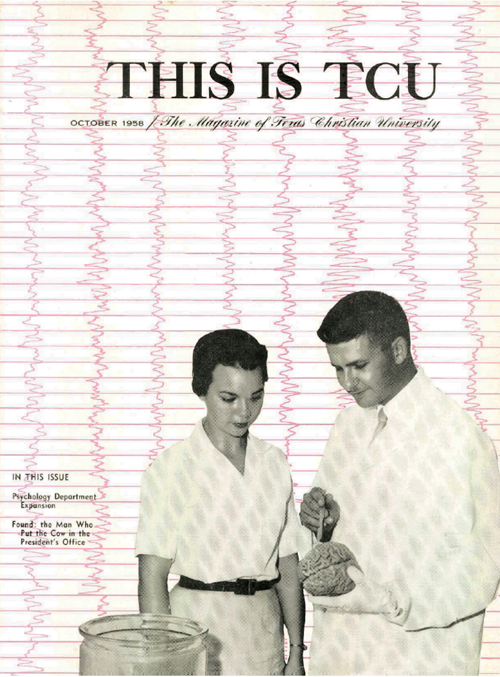
50 years of telling Frog stories
The first issue of TCU's university magazine opened with a story nearly five decades old. How appropriate.

Flip through the 1958 magazine page by page.
Download the 1958 magazine here.
By Nancy Bartosek
"Who put the cow in Prexy Waits' office back in 1916?"
That's the headline on the first page of the October 1958, inaugural issue of This is TCU, the precursor to the magazine you hold in your hands.
This light-hearted story about a historic college prank that was just solved was an inspired decision by then-editor Bobbye Barratt. She understood that a university filled with Horned Frogs needed a friendly, fun-loving and informative publication to reflect the attitudes, values and contributions of the university family.
But back to the cow debacle: Turns out the culprit fessed up to a reporter at The Dallas Morning News that year. And despite having once coaxed an apparently cooperative bovine into the president's office in the admin building (which resulted in the office getting redecorated), J. Shirley Sweeney '17 went on to become a physician in Dallas who founded a camp near Gainesville for children with diabetes and other chronic illness, for which he was being lauded in the news.
Sweeney declined to name his four co-conspirators but did note that by then one was a judge, another a senator. (Read the original story at
magazine.tcu.edu.)
We can learn much about our university and the prevailing societal notions from this 24-page issue -- there's an advertisement for Keepsake Diamond Rings (ranging from $2.50 to $575) that includes a coupon for the "fact filled" The Art of Dating hardcover book by Dr. Evelyn Millis Duvall that promises advice for "happy, successful dating to make your teens the best years of your life."
There are long stories about new research in the psychology department and the football team's strengths, as well as an essay by President M.E. Sadler that explains why administrators decided against a medical or law school and instead would slowly add a limited number of graduate programs to the university's offerings.
We learn that Charles Deward Gross '58 was the first graduate in the five-year Cooperative Engineering Program, where students spent three years at TCU then transferred to the University of Texas, Rice or Texas A&M to finish up engineering classes. (Gross earned a bachelor's of science in aeronautical engineering from Texas and a bachelor's of art from TCU.)
And of course there are several pages of the always-popular class notes that include new jobs, mailing addresses, vacation destinations and advance degree completions, in addition to the requisite births, marriages and anniversaries.
Over the years the magazine grew to 30 pages, then 40 then 56. In 1984, two-color covers became four-color. And in 1991, the magazine officially changed its name to what everyone was already calling it: The TCU Magazine. Then in 1997, departments with TCU-centric names like Riff Ram, Academe and Alma Matters were ushered in. The Horned Frog logo was first hidden on the cover in 1999, an inspired move by then-editor David Van Meter that has become a reader favorite.
The magazine grew to 80 pages in 2005 and has continued to evolve into the magazine you read today.
The magazine has always been a way to keep the Horned Frog family -- now scattered across the globe -- connected. But it is you, the readers who actually make the magazine what it is, for it is your achievements and successes throughout the years that provide the color to its pages each issue. And we thank you for that.
We do hope you enjoy the magazine. We made it just for you.
Comment at tcumagazine@tcu.edu.

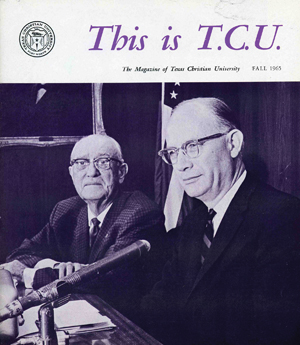
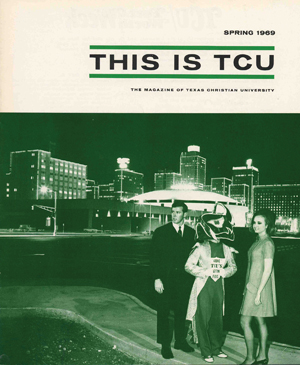
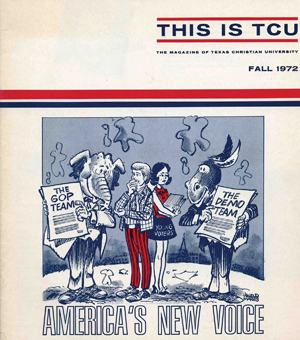
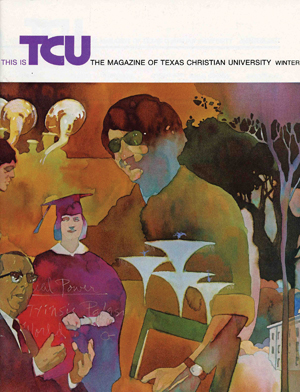
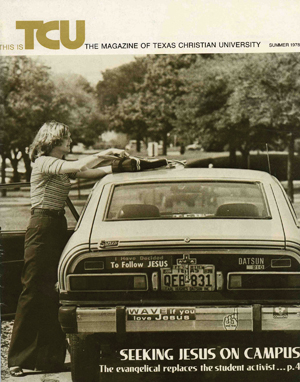
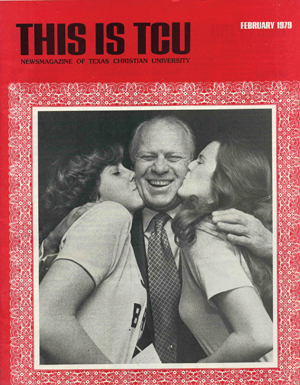
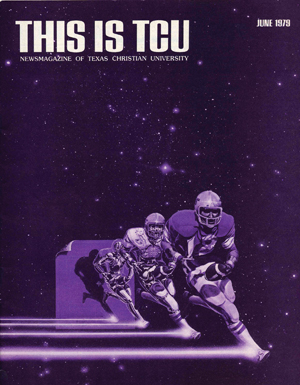
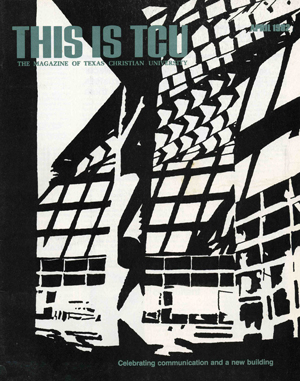

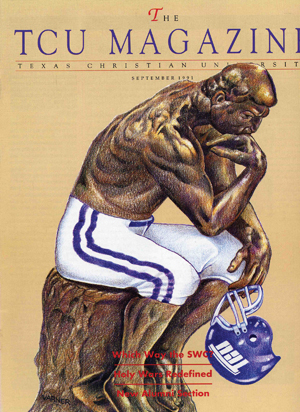
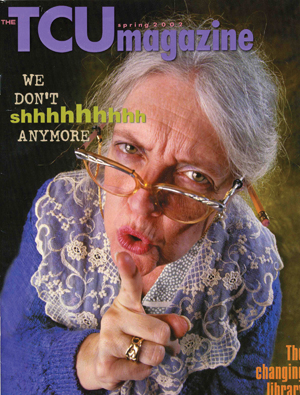
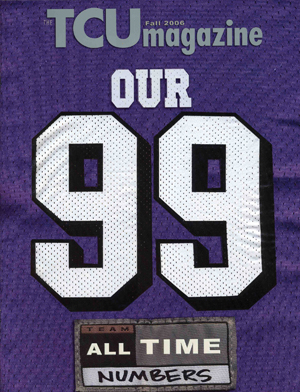
|



